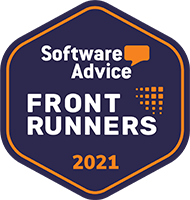Smart Inventory Practices: Why Min/Max Management is Essential for Business Growth in 2025

What is Smart Inventory?
A smart inventory management system leverages the latest technologies to make inventory management more accurate, efficient, and cost-effective. Various features and software solutions, from IoT technology to AI tools, fall under smart inventory management systems. With proper use, smart inventory technology can streamline processes, allow for inventory optimization, and increase productivity among inventory team members.
Understanding the Importance of Smart Inventory Practices
The positive impacts of smart inventory practices can't be overstated. Inventory teams using manual inventory management practices sacrifice uptime and risk human error interfering with their inventory needs. Unfortunately, stockouts and surplus carrying costs due to overstocking and obsolescence are common in organizations using manual inventory processes.
Conversely, smart inventory practices allow for inventory optimization thanks to real-time visibility and automated replenishment. Organizations can use optimized min/max levels to ensure they have the ideal amount of each item on hand at any given time.
With eTurns TrackStock, organizations can leverage features like the AI Min/Max dashboard to ensure that their min/max settings are set dynamically to keep inventory at optimized levels. In addition, TrackStock uses technology like IoT sensors to allow for smart inventory replenishment with minimal user intervention. These features allow for improved visibility, optimized inventory levels, less time spent reordering stockroom inventory, and digitized ordering—a requirement for better analytics and reporting.
Exploring the Min/Max Inventory Management Approach
Using smart inventory technology and a min/max inventory management approach can yield ideal results for most businesses. Min/max inventory management involves setting minimum and maximum levels for each inventory item and ensuring the item counts stay within that threshold. By considering usage and lead time, businesses can use these minimum and maximum levels to keep inventory safely stocked without incurring extra carrying costs.
Using one of the key inventory management trends of 2025, AI, eTurns TrackStock helps companies set the proper min/max levels for each item. The AI Min/Max Dashboard learns your usage patterns and enables you to keep levels efficient and reliable. With smart inventory technology like AI, inventory optimization is well within reach.
What are the benefits of implementing Min/Max Management for Business Profitability?
Unlike traditional inventory management methods, the min/max system dynamically adjusts to your actual usages, especially with smart inventory tech like the AI Min/Max Dashboard from eTurns. As such, min/max management provides a more responsive solution. Using min/max inventory management solutions can offer the following benefits and added capabilities:
- Optimized Stock Levels: Ensure you avoid running out of stock or carrying excessive amounts.
- Reduced Costs: Minimize costs associated with excess inventory and storage.
- Better Demand Planning: Improve forecasting accuracy to meet business demands effectively.
- Faster Order Fulfillment: Streamline replenishment orders and improve customer satisfaction.
- Data-Driven Decision Making: Utilize inventory data insights to make informed business decisions.
The Role of Automation in Min/Max Inventory Management for Future Success
Smart inventory solutions for point-of-use inventory combine leading technology like weight-based sensors with automated supply replenishment systems, making inventory management processes more hands-off for employees. Automated inventory replenishment tools like TrackStock SensorBins can work in the background, providing near real-time, automated counts without user intervention. In conjunction with the min/max inventory management framework, SensorBins can help teams send automated replenishment orders as soon as inventory counts fall below the set minimum.
Automated inventory management tools like these revolutionize how businesses approach stockroom inventory optimization.
Tips for Successfully Implementing a Min/Max Inventory Management System in Your Business
While the benefits are well worth it, implementing and adopting a brand-new smart inventory management system can cause disruptions if not carefully executed. With advance planning and open communication, the process can be smooth.
Once you've chosen smart inventory software like eTurns TrackStock, calculate your starting minimum/maximum levels. To do so, analyze your sales data, current inventory levels, and lead times. Once the TrackStock software has been used for replenishment for around 90 days, the min/max tuning dashboard will make AI-enabled suggestions for your minimum/maximum levels.
Set aside time to train all team members on the new technology. With a user-friendly solution like TrackStock, teams can be brought up to speed efficiently and move forward with the confidence to use the software to its maximum potential.
The Future of Smart Inventory Practices: Emerging Technologies and Trends to Watch Out For
As we look to the future, emerging technologies like advanced sensor technology, ever-improving AI tools, robotics, and machine learning developments will further enhance smart inventory management practices. These innovations will likely provide unprecedented inventory transparency, efficiency, and adaptability, creating more responsive, accurate, and resilient inventory management systems.
Conclusion: Embrace Min/Max Inventory Management to Drive Business Growth in 2025
Embracing min/max inventory management is essential for businesses seeking to reduce costs and boost efficiency in 2025. By optimizing inventory levels, reducing human error, and enhancing demand planning, companies can position themselves for success and growth. Integrating automation and emerging technologies will only amplify these benefits, making now the perfect time to adopt smart inventory practices.



